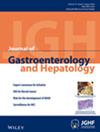Review Article: Albumin and Its Role in Inflammatory Bowel Disease: The Old, the New, and the Future
Abstract
Background
Circulating albumin concentrations are frequently measured in clinical practice. This review explores biochemical properties and physiological roles of albumin, its place in nutritional assessment, current understanding of perturbed circulating concentrations, and role in clinical management, with special focus on patients with inflammatory bowel disease (IBD).
Methods
A detailed literature search was performed.
Results
Albumin is synthesized by hepatocytes and comprises 3% of total body protein. It has a prolonged intravascular half-life (17–19 h) due to neonatal Fc-receptor-mediated salvage and has a multitude of physiological functions. Albumin homeostasis is affected in disease states often resulting in reduced level, which is not a direct marker of malnutrition. In patients with IBD, morbid albumin concentrations provide prognostic information, identification of nonintestinal conditions, guidance to the required aggressiveness of therapy and biologic dosage, monitoring of disease activity, and potential need for therapeutic escalation. Barriers to utilization of morbid albumin levels include the lack of consensus regarding cutoff values and the deficiency of high-quality data in this domain due to the retrospective design of the majority of studies. Serum levels hold greatest clinical potential in prognostication in acute severe ulcerative colitis. The premorbid level in the individual may provide insight into dosing of biologics and potentially enhance interpretation of morbid levels.
Conclusions
Understanding the physiology and pathophysiology of albumin is fundamental to interpreting its circulating levels. The clinical value of its measurement in patients with IBD may be undervalued, as it assists in evaluation of disease severity, prognosis, and therapeutic decision-making.


 求助内容:
求助内容: 应助结果提醒方式:
应助结果提醒方式:


